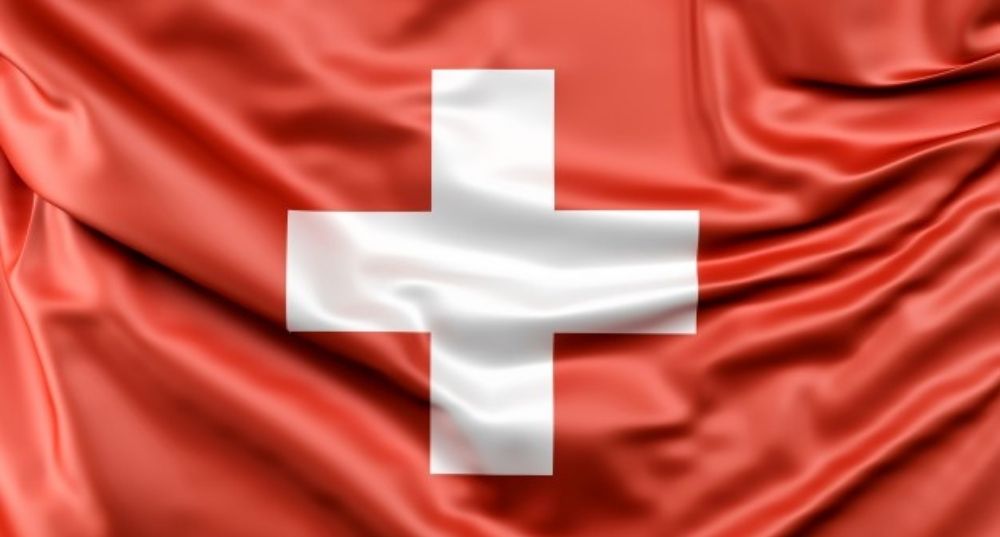The starting point: The brand “Switzerland” enjoys a worldwide reputation for excellence
As a rule, consumers expect that whenever they perceive references to Switzerland[i] on the packaging, that the product in question is actually of Swiss origin[ii], i.e. that “Switzerland” is “on the inside” as well. Swiss goods and services are highly sought after – they are associated with exclusivity, tradition and quality. This good reputation inspires confidence, which in turn influences purchasing decisions. It also provides a clear competitive advantage: Swiss products can command a higher price than similar foreign products or those of unknown origin (the so-сalled “Swissness[iii] premium”[iv]).
As a result, more and more companies began using an appealing reference to Switzerland on their goods or services next to their own brand (co-branding). However, this success story had a downside: Abusive use of the brand “Switzerland” also vastly increased. Some products labelled with “Swissness” had little to do with Switzerland, which led to a gradual loss of goodwill and brand value. This was, on the one hand, detrimental to those companies that were using the brand correctly, while on the other, led to a loss of consumer confidence. Consumers, in turn, started to search for alternatives that were more reliable. This negative development not only led to complaints from the business community and consumers, but also provoked political initiatives for an amendment to the Federal Trade Mark Protection Act (TmPA). The resulting “Swissness” legislation entered into force on 1 January 2017[v].
The domestic context: The “Swissness” legislation
The legislation regulates the use of the indication of source “Swiss”, the Swiss cross and the Swiss coat of arms. (In parallel, due to a revision of the Federal Act on the Protection of the Swiss Coats of Arms and Other Public Signs, the Swiss cross may now also be used on Swiss goods and services making it an important advertising tool for producers. However, the Swiss coat of arms remains reserved for use by the Swiss Confederation[vi]). No one using the brand “Switzerland” needs any authorisation to do so. The only requirement is that they comply with the statutory regulations and that they have to verify this on request[vii]. At the core of the “Swissness” legislation, and as set out in the TmPA, there lies a set of detailed requirements for natural products, foodstuffs, industrial products and services, under which products may be labelled as being Swiss[viii]:
- For natural products such as plants, minerals or products from hunting or fishing, it is the place of harvest or extraction – depending on the type of product – that is paramount in order for them to be identified as being of Swiss origin (Art. 48a TmPA).
- For foodstuffs, the activity that gave the product its essential characteristics must have taken place in Switzerland. In addition, at least 80% of the weight of available raw materials in Switzerland must actually originate in Switzerland. This principle is elaborated in more detail and exceptions and specifications are provided for, e.g. for raw materials that are not available or that cannot be produced in Switzerland (Art. 48b TmPA).
- For industrial products, at least one essential manufacturing step as well as at least 60% of the manufacturing costs must occur in Switzerland. All production costs (i.e. costs for raw materials, semi-finished products, accessory parts, product-related salaries and production overhead costs) can be taken into account, including the costs for research and development, quality assurance and certification. Exceptions and specifications have also been provided for here (e.g. for natural products that are not found in Switzerland and materials that are not available in sufficient quantities in Switzerland; Art. 48c TmPA).
A service is considered Swiss if the registered office as well as at least one of the provider's headquarters are in Switzerland. Exceptions apply with respect to subsidiaries of Swiss parent companies (Art. 49 TmPA).
These general criteria are completed with many specifications and some exceptions to make allowance for the fact that even for traditional products, some manufacturing steps take place abroad and certain raw and other materials are not available in Switzerland. Moreover, individual production steps can be promoted as “Swiss” (e.g. "Designed in Switzerland") if the step in question is entirely performed in Switzerland[ix].
Furthermore, particularly interested economic sectors may submit drafts for a special ordinance on the use of “Swissness”. In these drafts, the sectors can specify the legal requirements in even more detail. Following careful examination of such drafts, the Swiss Federal Council has enacted two special ordinances so far, one for watches and one for cosmetics[x].
Lesson no. 1: Only clear and specific rules create the legal certainty necessary to maintain the brand value of “Switzerland” sustainably in the long term. However, the rules have to allow for economic realities (such as traditional manufacturing methods) and must take globalisation into consideration. Legal certainty creates incentives for investments in the quality and authenticity of Swiss products. It also promotes transparent competition and prevents economic damage through loss of reputation and confidence.
The international context: “Swissness” abroad
Even before the “Swissness” legislation, Switzerland had already concluded several bilateral agreements with third states on the mutual recognition and protection of geographical indications – one with the Russian Federation on April 29, 2010[xi]. According to these agreements[xii], the protected designations[xiii] are reserved exclusively for products and services originating in a contracting state[xiv]. With regard to the brand “Switzerland” and the “Swissness” legislation, the bilateral agreements have one crucial effect: Whether or not a product originates in the respective contracting state is assessed according to the agreement – and, subsidiarily, under the domestic law of this state[xv]. In other words: A face cream sold in St. Petersburg with the marketing claim “Made in Switzerland” has to meet the requirements set out in the (Swiss) special ordinance on the use of Swiss indications of source for cosmetic products[xvi]. Should such a case be brought before a Russian court, the court would apply Swiss law[xvii].
Lesson no. 2: To maintain the brand value of a “national brand” like “Switzerland”, it is not sufficient to enact rules for domestic application only. Ideally, the advantages of the “Swissness” legislation, as explained above, come into effect even abroad. One possible way to achieve this goal is a set of bilateral agreements – be it in the form of free trade agreements or in the form of specific agreements on the mutual protection of geographical indications.
Enforcement
Indications of source in Switzerland fall under civil law. Consequently, it is within the sphere of duty of the producers and sellers of genuine Swiss goods and services to act against any improper use of “Swissness”. This is plausible because they are active on the market themselves and thus know specific situations far better than any public authority[xviii]. However, the “Swissness” legislation also authorises the Swiss Federal Institute of Intellectual Property (IPI)[xix] to take action on behalf of the Swiss Confederation as far as designations such as “Switzerland” or symbols such as the Swiss Cross or the Swiss coat of arms are concerned[xx].
In general, the IPI will only act if the interests of the Confederation are obviously affected, particularly when it concerns any potential misuse of the Swiss coat of arms. Usually, Swiss customs informs the IPI about goods of dubious origin (but labelled with “Swissness”) entering Switzerland. The IPI then in parallel sends a warning letter to the addressee of the shipment and an information letter to the trade association in the respective sector. This way of proceeding has quite a high quota of success at about 85%. In more serious cases, however, goods suspected of improper use of the brand “Switzerland” can be withheld by Swiss customs, upon request of the IPI, and ultimately destroyed.
Abroad, it is primarily trade associations that fight improper use of “Swissness”. However, in many cases they are informed by the IPI, which in turn has been informed of cases of possible misuse by the Swiss embassies or private parties. If a trade mark contains the Swiss cross and/or the designation "Switzerland", the IPI informs the trade association about it so that the latter has the option to file opposition to the registration. In certain countries[xxi], the IPI – via the Swiss embassies – actively monitors new trade mark registrations. In such cases, a local agent regularly informs the IPI if a problematical trade mark has been registered.
With a view to further improving the enforcement of the brand “Switzerland”, the IPI is about to found a public-private partnership (PPP) with private trade associations and private enterprises. In such a PPP, the IPI can act as a business office and coordinate interventions (e.g. when cross-sector action is required).
Lesson no. 3: The most appropriate set of rules are useless if they are not enforced. Even if enforcement is above all a matter for competitors and trade associations, the IPI has an important role to play. Domestically, this role starts with trade mark examination (refusal of geographically deceptive marks) and ends with actively fighting improper trade mark use (dispatch of warning letters, seizure of infringing goods by the customs authorities). Abroad, it starts with gathering information and cooperating with local trade mark offices and ends with mandating local agents with opposing problematical marks.
--
This arcticle is published both in English and Russian, read the Russian translation here / Эта статья публикуется на английском и русском языках, прочесть статью на русском языке можно здесь.
Image: www.slon.pics - www.freepik.com
--
[i] Such as “Swiss”, “Switzerland”, “Swiss Quality”, “Made in Switzerland”, the Swiss flag or iconic images like the Matterhorn, for instance.
[ii] The origin of a product under indications of source law (e.g. "Swiss Made" appearing on a product) must not be confused with the origin of a product under customs law (e.g. Switzerland indicated on a certificate of origin). As these two designations fulfil different functions (to indicate a geographical origin and to apply specific customs tariffs respectively), "Swiss" goods do not have to fulfil the same legal requirements according to whether indications of source law or customs law is concerned.
[iii] The terms “Brand Switzerland” and “Swissness” are used synonymously. Both mean goods or services labelled with the designation “Swiss”, the Swiss cross or any other information connected to Switzerland.
[iv] According to studies carried out by ETH Zurich and the University of St. Gallen, the “Swissness premium” of typical Swiss products and agricultural produce constitutes up to 20% of the sales price – and even up to 50% for top level watches and luxury items. In the Russian Federation, for example, a Swiss vacuum cleaner commands a “Swissness premium” of 23% compared to a vacuum cleaner with an unknown country of origin. For a steel watch, this premium is 28%. The same watch commands a premium of 112% in Japan. The watch, chocolate, jewellery and machine industries alone currently generate additional revenues of up to CHF 5.8 billion, which corresponds to about 1% of Switzerland’s GDP. (Conradin Bolliger, Switzerland as the Product Origin: Swiss Domestic Buyers and the Associations and Preferences they have for Domestic Agricultural Products, Conference Proceedings of the 18th Annual Conference of the Austrian Society for Agricultural Economics, 2008 (studies by ETH Zurich, which show that in the home market, consumers are also willing to pay considerably more for quality Swiss products); Stephan Feige et al., Swissness Worldwide – International Study on the Perception of the Swiss Brand, University of St. Gallen et al., 2008, 2010, 2013 and 2016.)
[v] Before the “Swissness” legislation, there were no specific requirements in statuary law. In addition, prejudice was scarce and not on the federal level but only on the cantonal one. The commercial court of St. Gallen held in two decisions that for a Swiss product, 50% of the manufacturing costs must have been incurred in Switzerland and the essential manufacturing step must have been carried out in Switzerland (HGer SG, Mitt. 1969/1, 61 E. 1, Helvetico u. Swissor; GVP SG 1992, 100 E.7, Headties made in Switzerland).
[vi] However, companies that have been using the Swiss coat of arms for decades as part of their market presence, are, as an exception and only upon a well-founded request, accorded a right of continued use.
[vii] According to Art. 51a TmPA, the user of “Swissness” is responsible for checking the legality of his use – the burden of proof lies with him.
[viii] For details on the “Swissness” legislation in French and German, see, among others: Felix Addor/Nicolas Guyot, La réglementation «Swissness»: objectifs et principes, Jacques de Werra (Éd.), Indications géographiques: Perspectives globales et locales, Genève 2016, 1-65; Simon Holzer in: SHK Markenschutzgesetz (MSchG), 2nd edition 2017, Art. 47 et seq.; BSK-MSchG Alexander Pfister, 3rd edition 2017, Art. 47 et seq.
[ix] However, the Swiss cross may not be used on such products.
[x] Ordinance on the Use of “Switzerland” or “Swiss” for Watches; Ordinance on the Use of Swiss Indications of Source for Cosmetic Products,
[xi] https://www.admin.ch/opc/de/classified-compilation/20102831/index.html - in German, French or Italian only.
[xii] The other agreements were concluded with Germany, France, Spain, Hungary, Czech Republic, Slovakia, Jamaica and Georgia. With the EU, Switzerland concluded an agreement on trade in agricultural products. Annexes 7, 8 and 10 to this agreement contain lists with protected geographical indications – for wine, spirits, agricultural produce and foodstuffs.
[xiii] The names of the states and their administrative regions (cantons in Switzerland, republics and oblasts in the Russian Federation) are protected in an absolute way, i.e. for all kinds of products, whereas the indications listed in Annex II of the agreement are protected in a relative way, i.e. for the specific products listed only.
[xiv] See Art. 2 of the agreement between the Russian Federation and Switzerland, footnote 12 above.
[xv] See Art. 3 of the agreement between the Russian Federation and Switzerland, footnote 12 above.
[xvi] See footnote 11 above.
[xvii] Reversely, a Swiss court would apply Russian law to determine whether Russkiy kvas sold in Switzerland is of Russian origin or not (see Art. 3 section 1 letter (b) and Annex II of the agreement).
[xviii] Professional and trade associations and consumer organisations can also file an action against improper use of “Swissness” before a civil court; see Art. 56 para. 1 letters a and b TmPA.
[xix] The IPI is the federal government's central point of contact for all questions concerning patents, trade marks, geographical designations of origin, design protection and copyright. It is its own legal entity – governed by public law – and is independent from the federal government budget.
[xx] See Art. 56 para. 1 letter c TmPA.
[xxi] Currently the People’s Republic of China, Hong-Kong, India, Argentina, Germany, France, the UK and the USA.











